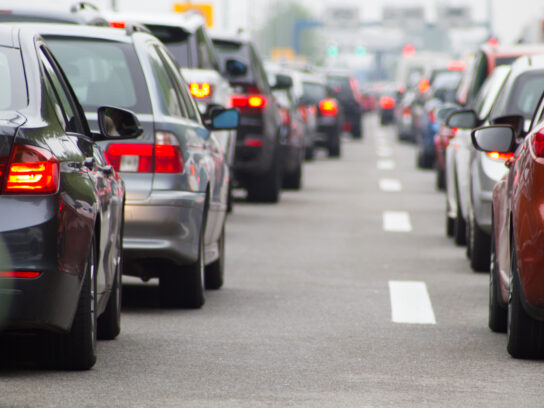
AAA forecasts a busy Memorial Day weekend, with 43.8 million travelers expected to journey 50 miles or more from home. This would mark a 4% increase from last year and would nearly match the 2005 record of 44 million travelers.
“We haven’t seen numbers like these in almost 20 years,” said Paula Twidale, Senior Vice President of AAA Travel. “We’re projecting an additional one million travelers compared to 2019. This signals a very busy summer travel season ahead.”
Road trips will likely set a record. AAA projects 38.4 million people will travel by car, the highest number since tracking began in 2000. This figure is up 4% from last year and 1.9% higher than in 2019. Car travel remains popular due to its convenience and flexibility.
Gas prices should be similar to last year’s national average of $3.57 per gallon. Although prices rose this spring, they have stabilized in recent weeks. However, they may increase as the summer driving season begins. The cost of oil, influenced by conflicts in the Middle East and Ukraine, remains a wildcard.
Airports are preparing for a surge in travelers. AAA expects 3.51 million air travelers, a 4.8% increase from last year and a 9% jump from 2019. This will be the busiest Memorial Day weekend at airports since 2005. Air ticket prices are comparable to last year, with a 1% to 2% increase for domestic flights. Factors affecting airfare include destination, number of stops, and fare class.
Nearly two million people will use other transportation modes, such as buses, cruises, and trains. AAA projects 1.9 million travelers in this category, a 5.6% increase from last year. “This category took the biggest hit during the pandemic,” Twidale said. “Now, five years later, we’re back to 2019 numbers.”
INRIX, a transportation data provider, advises drivers to travel early on Thursday or Friday to avoid commuter traffic. Returning home on Sunday or Monday, they should avoid afternoon hours. “Travel times are expected to be up to 90% longer than normal,” said Bob Pishue, INRIX transportation analyst. “Travelers should use traffic apps, 511 services, and local news stations to avoid long delays.”
Best and Worst Times to Travel by Car
- Thursday, May 23: Worst: 12-6 PM; Best: Before 11 AM, After 7 PM
- Friday, May 24: Worst: 12-7 PM; Best: Before 11 AM, After 8 PM
- Saturday, May 25: Worst: 2-5 PM; Best: Before 1 PM, After 6 PM
- Sunday, May 26: Worst: 3-7 PM; Best: Before 1 PM
- Monday, May 27: Worst: 3-7 PM; Best: After 7 PM
Peak Congestion by Metro
- Atlanta: Atlanta to Savannah via I-16 E, Saturday 4:45 PM, 5h 31m, 54% increase
- Boston: Manchester to Boston via I-93 S, Sunday 8:45 AM, 1h 48m, 50% increase
- Chicago: Milwaukee to Chicago via I-94 E, Sunday 4:30 PM, 2h 25m, 27% increase
- Denver: Fort Collins to Denver via I-25 S, Sunday 4:15 PM, 1h 24m, 56% increase
- Detroit: Kalamazoo to Detroit via I-94 E, Sunday 8:45 PM, 2h 48m, 40% increase
- Houston: Galveston to Houston via I-45 N, Sunday 5:00 PM, 1h 11m, 73% increase
- Los Angeles: LA to Bakersfield via I-5 N, Thursday 6:15 PM, 2h 45m, 84% increase
- Minneapolis: Eau Claire to Minneapolis via I-94 W, Monday 8:45 AM, 1h 47m, 38% increase
- New York: New York to Albany via I-87 N, Thursday 11:45 AM, 2h 37m, 64% increase
- Philadelphia: Philadelphia to Baltimore/DC via I-95, Friday 7:30 AM, 2h 1m, 43% increase
- Portland: Hood River to Portland via I-84 W, Monday 6:30 PM, 1h 20m, 42% increase
- San Diego: San Diego to Palm Springs via I-15 N, Friday 6:15 PM, 3h 4m, 34% increase
- San Francisco: San Francisco to Napa via I-80 E, Friday 11:00 AM, 1h 25m, 56% increase
- Seattle: Ellensburg to Seattle via I-90 E, Sunday 4:30 PM, 2h 34m, 58% increase
- Tampa: Gainesville to Tampa via I-75 S, Sunday 9:00 AM, 3h 47m, 88% increase
- Washington, DC: Washington, DC to Baltimore via Balt/Wash Pkwy N, Friday 2:15 PM, 1h 21m, 72% increase
Sources: AAA, INRIX
Nationally, #AAA predicts more than 42 million will travel this Memorial Day weekend, up 7% from last year. @LtGovMiller, @AAAMDNews, @OCMD, @WRAP_org, #MDTAPolice, @MDSP & @AAADCNews will release local #’s & traffic safety/travel updates a week from today. pic.twitter.com/6W8WpnjIY9
— AAA Mid-Atl MD News (@AAAMDNews) May 17, 2023


Comments are closed.